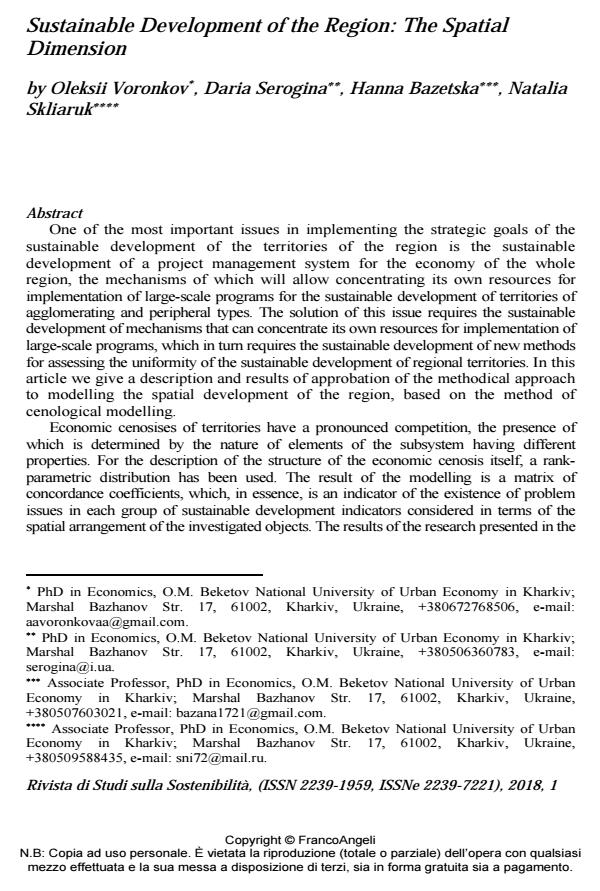Sustainable Development of the Region: The Spatial Dimension
Titolo Rivista RIVISTA DI STUDI SULLA SOSTENIBILITA'
Autori/Curatori Oleksii Voronkov, Daria Serogina, Hanna Bazetska, Natalia Skliaruk
Anno di pubblicazione 2018 Fascicolo 2018/1
Lingua Inglese Numero pagine 14 P. 11-24 Dimensione file 315 KB
DOI 10.3280/RISS2018-001003
Il DOI è il codice a barre della proprietà intellettuale: per saperne di più
clicca qui
Qui sotto puoi vedere in anteprima la prima pagina di questo articolo.
Se questo articolo ti interessa, lo puoi acquistare (e scaricare in formato pdf) seguendo le facili indicazioni per acquistare il download credit. Acquista Download Credits per scaricare questo Articolo in formato PDF

FrancoAngeli è membro della Publishers International Linking Association, Inc (PILA)associazione indipendente e non profit per facilitare (attraverso i servizi tecnologici implementati da CrossRef.org) l’accesso degli studiosi ai contenuti digitali nelle pubblicazioni professionali e scientifiche
One of the most important issues in implementing the strategic goals of the sustainable development of the territories of the region is the sustainable development of a project management system for the economy of the whole region, the mechanisms of which will allow concentrating its own resources for implementation of large-scale programs for the sustainable development of territories of agglomerating and peripheral types. The solution of this issue requires the sustainable development of mechanisms that can concentrate its own resources for implementation of large-scale programs, which in turn requires the sustainable development of new methods for assessing the uniformity of the sustainable development of regional territories. In this article we give a description and results of approbation of the methodical approach to modelling the spatial development of the region, based on the method of cenological modelling. Economic cenosises of territories have a pronounced competition, the presence of which is determined by the nature of elements of the subsystem having different properties. For the description of the structure of the economic cenosis itself, a rank-parametric distribution has been used. The result of the modelling is a matrix of concordance coefficients, which, in essence, is an indicator of the existence of problem issues in each group of sustainable development indicators considered in terms of the spatial arrangement of the investigated objects. The results of the research presented in the paper allow us to conclude that it is expedient to use the developed method to evaluate the spatial development of the regions.
Parole chiave:Region, spatial development, economic cenosis, cenologic modelling.
Oleksii Voronkov, Daria Serogina, Hanna Bazetska, Natalia Skliaruk, Sustainable Development of the Region: The Spatial Dimension in "RIVISTA DI STUDI SULLA SOSTENIBILITA'" 1/2018, pp 11-24, DOI: 10.3280/RISS2018-001003